First there was Baseball cards. Then there was Pokémon. Now, thanks to Norman Jeune III and Zondervan, we have Theologian Trading Cards!
Functioning more as a dictionary than as a true “trading card” set – there isn’t actually any ‘trading’ involved – the full set includes three hundred key figures from Church History (with more of an emphasis on Protestantism). Although there isn’t any ‘trading’ involved — which unfortunately removes any possible scenarios where 3 Bultmanns could be traded for a Barth — the theologians are organized into teams, giving the set a bit of that classic baseball card feel. The teams are color coordinated which should aid memorization as well.
Here is the full list:
Athens Metaphysicians : Philosophers
St. James Padres : Church Fathers (Patristic Era)
Orthodoxy Dodgers** : Heretics
Munich Monks : Hermits, Monks, Mystics
Avignon Crusaders : Medieval (Excludes Mystics and Monks)
Wittenberg Whistle-Blowers : Early Reformers / Later Lutheran Church
Geneva Sovereigns : Later Reformed Church / Early Reformers
St. Pius Cardinals : Roman Catholic (Primarily Post-Reformation)
Constantinople Hesychasts : Orthodox Church
Canterbury Monarchs : English Reformers / Anglicans / Puritans
Münster Radicals : Radical Reformation / Anabaptists
Serampore Preachers : Missionaries
Los Angeles Knights : Fundamentalists/Evangelicals
Jerusalem Resourcers : Contemporary
Berlin Aggiornamentos : Contemporary
**Best name ever!!
What is most beneficial about the set is that students can situate figures within theological/historical movements more easily without strictly memorizing names and dates. For instance, if one can’t recall much about, say, George Wishart, other than the fact that his card is brown, the student would easily be able to recall certain information from this association, such as his role in the English/Scottish Reformation (since he is on the ‘Canterbury Monarchs’).
Most of the cards include portraits, or in the case of contemporary figures pictures, of the theologians. However, one unfortunate aspect of the set is that some images are lacking. The team with the least amount of images is, as might be expected, the Orthodoxy Dodgers (only 5/17 have images). Of course, if all their works were burned – as well as their bodies! – in an attempt to eradicate their teachings, it is quite obvious that no portraits of these figures would remain either. On the whole most of the images that are missing in the full set are of esoteric figures, and so finding images for every last figure is understandably difficult. Yet I was curious about the absence of images of Ernst Käsemann and E.P. Sanders (a simple Google search reveals plenty for each). This is only a minor aesthetic critique.
This project was put together by my friend Norman Jeune III who is a graduate of Biola University and Talbot School of Theology. Norm is to be commended for this great resource; the amount of work put into this had to be considerable, especially when you factor in all the random figures in this set (there are several I had never heard of). Norm also asked a few other Biola people to participate by writing information for a few of the cards including Brian D. Asbill (“Karl Barth”), Jordan P. Barrett (“Kevin J. Vanhoozer”), fellow Two Cities blogger Matthew A. Wilcoxen (“Aristotle,” “Martin Heidegger,” “Søren Kierkegaard,” “Plato,” and “Plontius”), as well as myself (“Nicholas Thomas Wright”). I was very excited to play a role in this project—even such a minor one. I think this trading card set has the potential to be a really significant resource for students.
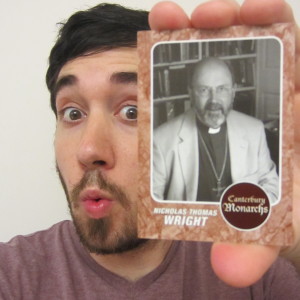 Now, about that one card that I had responsibility for… To set the record straight, I did not write on NT Wright’s card that he received a “ThD” from Oxford. If you know anything about Oxford you know that they do not award ThDs. In fact, they don’t even award PhDs—the common nomenclature for a doctorate. Instead they award DPhils. You’d think, that given responsibility for just ONE CARD I wouldn’t drop the ball that badly. And I can honestly say that it was not my fault, nor was it Norm’s fault. Not sure who is responsible, but that doesn’t matter. Unfortunately, I’m the one who looks like I don’t know my own Doktorvater’s credentials. But anyways, now that that’s settled…
Now, about that one card that I had responsibility for… To set the record straight, I did not write on NT Wright’s card that he received a “ThD” from Oxford. If you know anything about Oxford you know that they do not award ThDs. In fact, they don’t even award PhDs—the common nomenclature for a doctorate. Instead they award DPhils. You’d think, that given responsibility for just ONE CARD I wouldn’t drop the ball that badly. And I can honestly say that it was not my fault, nor was it Norm’s fault. Not sure who is responsible, but that doesn’t matter. Unfortunately, I’m the one who looks like I don’t know my own Doktorvater’s credentials. But anyways, now that that’s settled…
What is certainly “A fun way to learn Church History and Theology,” Norman Jeune III’s Theologian Trading Cards have the potential to make their way onto the syllabi of seminaries around the world. I highly recommend it!

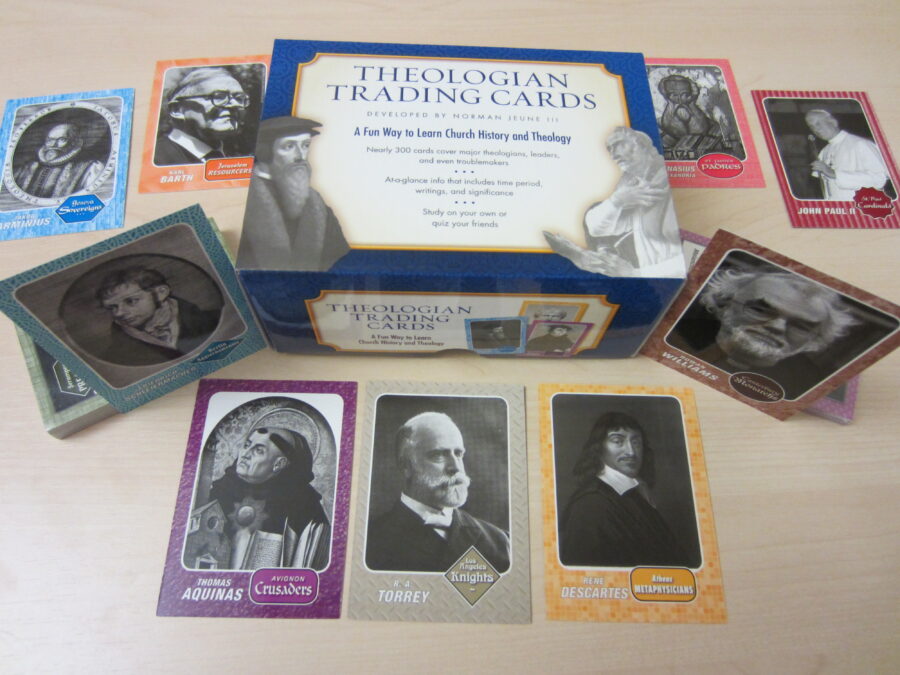
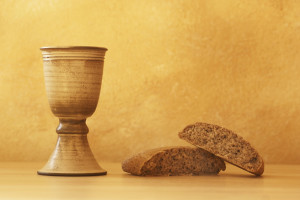
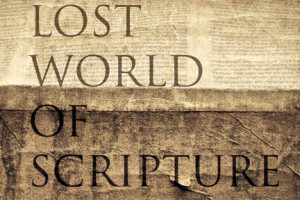
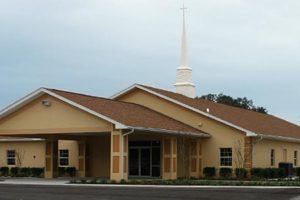
Leave a Reply
Your email is safe with us.